The Leibniz-IZW is an internationally renowned German research institute. It is part of the Forschungsverbund Berlin e.V. and a member of the Leibniz Association. Our goal is to understand the adaptability of wildlife in the context of global change and to contribute to the enhancement of the survival of viable wildlife populations. For this purpose, we investigate the diversity of life histories, the mechanisms of evolutionary adaptations and their limits, including diseases, as well as the interrelations of wildlife with their environment and people. We use expertise from biology and veterinary medicine in an interdisciplinary approach to conduct fundamental and applied research – from the molecular to the landscape level – in close dialogue with the public and stakeholders. Additionally, we are committed to unique and high-quality services for the scientific community.
+++ Current information on African swine fever: The Leibniz-IZW conducts research on the population dynamics, on models of disease outbreaks in wild boars and on the ecology and human-wildlife interaction in urban areas. African swine fever is a reportable disease in domestic swine and therefor is the purview of the respective federal state laboratories and the Friedrich-Loeffler-Institut (Federal Research Institute for Animal Health) FLI. +++
News
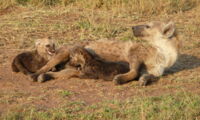
Competing for milk can be a stressful thing for hyena twin siblings
Researchers from the German Leibniz Institute of Zoo and Wildlife Research (IZW) demonstrate for the first time in a free-ranging mammal that hunger and conflict for access to resources can be “stressful” for subordinate siblings and socially challenged dominant siblings, and hence increase their cost of maintaining homeostasis. These findings were published in the science journal Biology Letters.
Read more … Competing for milk can be a stressful thing for hyena twin siblings
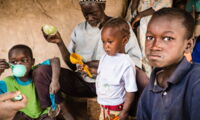
Demographic transition does not stop human evolution
In many places around the world, people are living longer and are having fewer children. But that’s not all. In a study of people living in rural Gambia, it appears that this modern-day “demographic transition” may lead women to be taller and slimmer, too. Researchers from the Leibniz Institute of Zoo and Wildlife Research (IZW) as well as British, American and Gambian institutes and universities just published their discovery in the Cell Press journal Current Biology.
Read more … Demographic transition does not stop human evolution
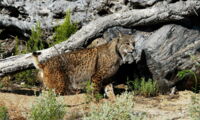
For the first time Iberian lynx embryos are collected and preserved: Another ray of hope for the most endangered cat species worldwide
A pioneering procedure in felines allows the collection of biological material from Iberian lynx females before castration. The preserved biological material of the lynxes will be used in future conservation breeding programmes.
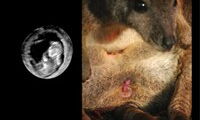
The climb to the pouch begins in utero
Scientists have visualised the short pregnancy of a small species of the kangaroo and wallaby family of marsupials, the tammar wallaby (Macropus eugenii), for the first time by high-resolution ultrasound. The study has shed light on a number of developmental events that are likely to be fundamental to all marsupials. These include a very rigid program of embryonic and fetal development with very little variation in pregnancy length, specialised movements of the endometrium that roll the embryo around the uterus prior to attachment, and climbing movements of the tiny fetus up to three days before birth. This latter finding is one of the earliest developmental behaviours observed in a
mammal and prepares the immature young for the journey to its mother’s pouch.
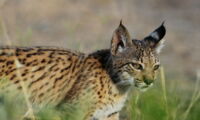
Cryopreservation – a chance for highly endangered mammals
Scientists of the Leibniz Institute for Zoo and Wildlife Research (IZW) succeeded in carrying out cryopreservation of felid ovary cortex.
Read more … Cryopreservation – a chance for highly endangered mammals
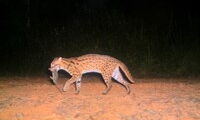
Wirtschaftsweg statt Wildwechsel
Die Bengalkatze scheint sich in Nutzwäldern wohl zu fühlen: Sie kommt dort häufiger vor als in vollständig naturbelassenen Lebensräumen. Dies fanden Wissenschaftler unter der Leitung des Leibniz-Instituts für Zoo- und Wildtierforschung (IZW) in einer Studie heraus. Doch mit ihrer Fähigkeit, sich auch in gestörten Lebensräumen gut zurechtzufinden, ist die häufigste Katzenart Asiens eine Ausnahme unter den Raubtieren des tropischen Regenwaldes.
-easz6zb0a013ay0.jpg)
Virus-host co-evolution: How specialised should a strain of a multi-host virus be?
A new study of canine distemper virus (CDV) provides the first evidence that the virus occurs as specialist strains that emerge in response to strong evolutionary selection in the large global domestic dog population, and as generalist strains adapted to infect a broad range of carnivore species that occur as smaller host populations. The study not only unravelled one key mechanism which led to the evolution of specialist and generalist strains, it also showed that specialising on one host species comes at the cost of a reduced ability to infect other host species.
Read more … Virus-host co-evolution: How specialised should a strain of a multi-host virus be?
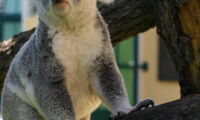
Genome-invading retroviruses are a nasty surprise: the case of the koalas
By integrating themselves into the germ line of their host, retroviruses change the genetic code of their host. The only known case where this process can be currently observed is in Koalas. As an international team of scientists from Australia, Europe and North America just found out, this process may take longer than expected, with the virus continuing to have a serious pathological impact on the host which may go on for centuries. These findings have been just published online in Molecular Biology and Evolution.
Read more … Genome-invading retroviruses are a nasty surprise: the case of the koalas




